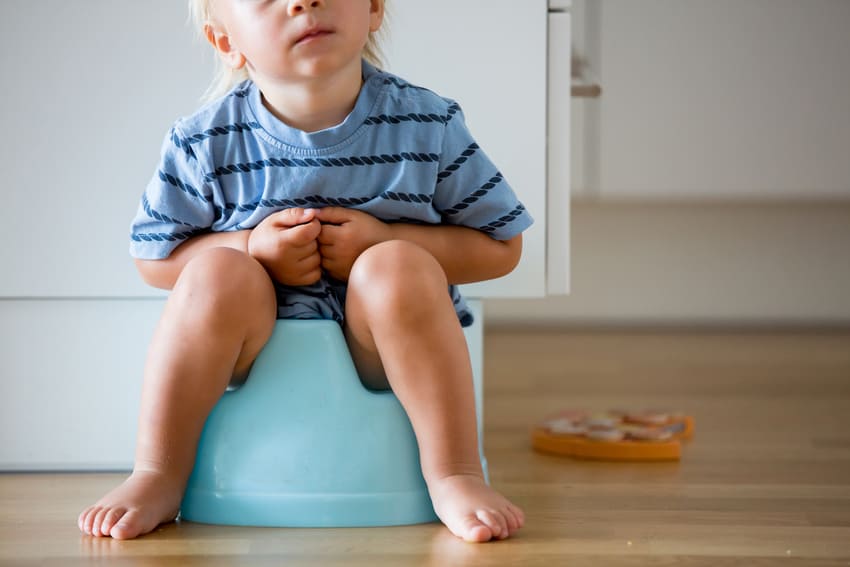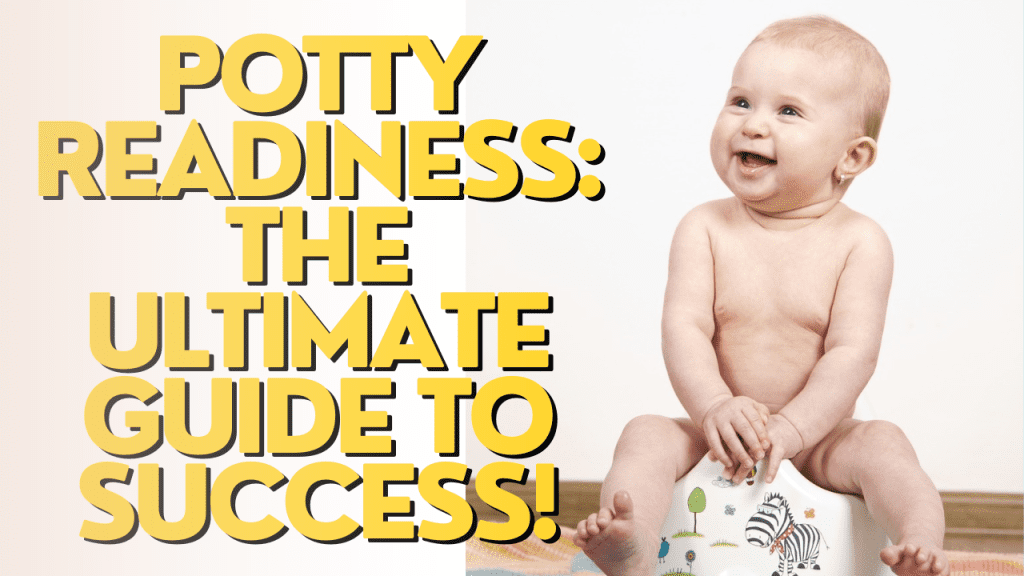Potty readiness is the process of training a toddler or infant to use the toilet for urination and defecation. It is usually recommended to start potty training around the age of 2, although some children may be ready a little earlier or later based on their individual development.
Signs of readiness for toilet training include being drier for longer periods, following simple directions, showing independence, pooping on schedule, showing interest in the process, announcing when they need to go, disliking being wet or dirty, and being able to undress themselves.
Understanding these signs can help determine when a child is ready to begin the potty training journey.


Credit: www.thepragmaticparent.com
1. Signs Of Potty Readiness
Toilet training, also known as potty training, is the process of teaching a child how to use the toilet for urination and bowel movements. Recognizing when your child is ready for potty training involves observing both physical and cognitive indicators, as well as emotional and behavioral cues.
Physical indicators may include the ability to stay dry for longer periods, showing interest in the bathroom, or being able to pull pants up and down. Cognitive indicators may involve understanding simple instructions or being aware of the sensation of needing to go.

Emotional and behavioral cues can include displaying discomfort in a soiled diaper, expressing curiosity about the toilet, or showing a desire for independence. Recognizing these signs of potty readiness is crucial for successful and stress-free potty training.
2. Getting Started With Potty Training
Potty training is an important milestone for toddlers. To get started, setting up a potty training routine is crucial. This helps establish consistency and familiarity for your child. Choosing the right potty training method is also essential. There are various approaches like the potty chair method or the toilet insert method.
Consider your child’s preferences and comfort when making this decision. Additionally, gathering necessary supplies such as a potty chair or toilet insert, wipes, and underwear is vital. Having these items readily available will make the process smoother. Remember, every child is different, and potty readiness can vary.
It’s important to be patient and supportive throughout the journey.
3. Potty Training Tips And Techniques
To introduce the concept of using the potty, it’s important to start discussing it early on. Encourage consistent bathroom visits by establishing a routine and taking your child to the potty at regular intervals. This will help them become familiar with the idea and develop a habit.
Dealing with accidents and setbacks is normal during the potty training process. Stay calm and patient, offering gentle reminders and praise for successful attempts. Remember, every child is different and will progress at their own pace. Provide support and encouragement throughout their potty readiness journey.
Frequently Asked Questions On Potty Readiness
What Is The Best Age To Start Potty Training?
The best age to start potty training is usually around 2 years old. However, every child is different, so you can start a little earlier or later depending on their readiness. It’s important to look for signs of readiness, such as your child being drier for longer periods, following simple directions, showing independence, pooping on a schedule, and displaying interest in the process.
Another good indicator is when your child announces when they need to pee or poop. Additionally, if your child doesn’t like being wet or dirty and can undress themselves, these are positive signs that they may be ready for potty training.
Remember to pay attention to your child’s cues and adjust the timing based on their individual development.
What Are 3 Signs Of Readiness For Toilet Training?
Three signs of readiness for toilet training include:
1. Longer periods of dryness: your child can hold their urine for longer periods, indicating their bladder control is improving.
2. Following simple directions: they can understand and follow basic instructions, such as sitting on the toilet when told to do so.
3. Showing independence: your child displays a desire to do things on their own, including wanting to use the toilet without assistance.
These signs indicate that your child is physically and mentally ready for toilet training. It’s important to recognize these signs and start the training process when your child is ready to increase the chances of success.
What Are 4 Signs A Child Is Ready For Toilet Training?
There are four signs that indicate a child is ready for toilet training:1. Longer dry spells: the child stays dry for longer periods of time. 2. Follows simple instructions: the child can understand and follow basic directions. 3. Shows independence: the child exhibits a desire to do things independently.
4. Regular bowel movements: the child has predictable bowel movements. These signs suggest that the child has developed the physical and cognitive skills necessary for toilet training. It’s important to note that every child is unique, so readiness may vary.
Parents should look for these signs and consider their child’s individual development before starting toilet training.
What Is The 3 Day Potty Rule?
The 3-day potty rule is a method of potty training that aims to fully train a child in just three days. The rule involves dedicating three consecutive days to focus solely on potty training without any distractions or interruptions. During these three days, the child is encouraged to use the toilet for both urination and bowel movements.
The process includes regular and frequent visits to the bathroom, using positive reinforcement and rewards for successful attempts, and gradually increasing the child’s independence in using the toilet. This method is said to be effective because it provides a concentrated and consistent approach to potty training, helping the child establish a routine and understand the concept of using the toilet.
However, it is important to note that every child is different and the success of the 3-day potty rule may vary.
Key Takeaways: Potty Readiness: The Ultimate Guide to Success!
To sum up, potty readiness is an important milestone in a child’s development. It is usually best to start potty training when your child is around the age of 2 or when they show signs of readiness.
These signs include being drier for longer periods, being able to follow simple directions, showing independence, pooping on schedule, showing interest in the process, announcing when they need to go, and not liking being wet or dirty.
Every child is different, so it’s essential to pay attention to your child’s cues and determine the right time to start potty training for them.
Remember, patience and consistency are key during this process. With a supportive and positive approach, you can help your child successfully transition from diapers to using the toilet independently.
Good luck on this exciting journey of potty readiness with your little one!



